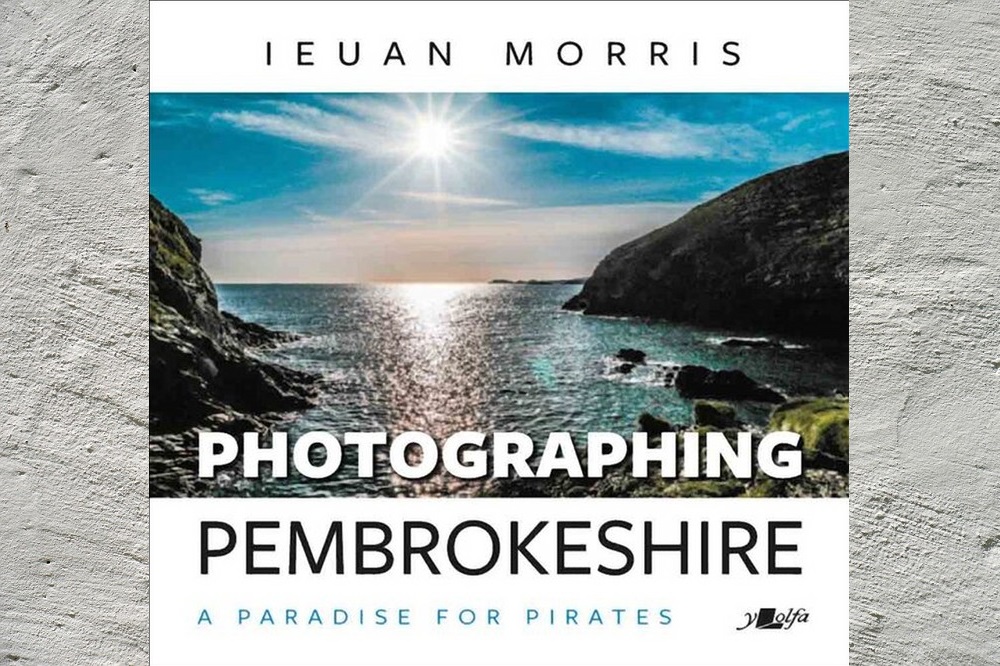Review: Photographing Pembrokeshire combines outstanding images with lively, skilful storytelling

Tim Wickenden
On first glance, ‘Photographing Pembrokeshire’ looks like a volume full of carefully curated photographs, a selection of beautiful images from across the county, and with more than a hundred within its pages, that would have more than justified its existence. But this work is so much more than a collection of wonderful photography, and a hint to this is in the subheading. ‘A Paradise for Pirates’.
Split into two sections: the first covering areas north of the ‘Landsker Line’ and the latter, the south, Morris takes us on a journey through the county, further dividing his topics into seventeen concise chapters. I liked the logical layout that precludes any prior knowledge of Pembrokeshire and makes this book as appealing to a local as it would to one from abroad.
Quality
Exploring the photographs, I delighted in their thoughtful composition. As a resident for the last sixteen years of North Pembrokeshire, and having both photographed and filmed here, it was agreeable to see many familiar scenes, but construed and viewed through Morris’s eyes gave them a new, rich context. It is far from easy to make great photos and in this volume I found page-after-page of rich quality.
With modern digital technologies, there is always the temptation to enhance and meddle, but Morris’s images have a natural balance of light, colour and composition that is only achievable by careful work in camera. Taken across the seasons, the photographs quite took me with the skill of capturing that particular Pembrokeshire light that is most apparent in autumn and early winter and frustratingly can be hard to replicate.
Most of the pictures are in full colour, with a few in a haunting sepia tone. Mainly, landscape views with a handful of superb portraits depicting ‘colourful’ locals whose stories fall within the text. In particular, the photograph of ‘Aunty Bessie’ on page 27 is a work of art. Of the landscape photographs, it is difficult to choose one among the many as a favourite, but I was much engaged with the shot of ‘the remains of the cotton mill’ at Trefin.
By taking this photograph with lens presented to the light rather than back lit gives it an ethereal quality, skillfully highlighting the delicate colour of the old ‘Pembrokeshire Blue’ stone walls. This thoughtful craft and attention to detail is evident throughout the book, making the reader wish to revisit and explore the images.
Rich history
Alongside the outstanding photographs is a good deal of text that tells the story of Pembrokeshire’s rich history, environment, and individuality. Pembrokeshire born and bred, Morris spent most of his pre-retirement life as a barrister working the Cardiff and Chester circuits. I once spent an engaging lunchtime in a London pub chatting to a barrister who told me that most of his courtroom work was in relating stories (based, of course, on the evidence) that would allow the jury to keep interested and laid out in a manner that they would understand. This makes perfect sense, and with this book, Morris’s own skill at taking a wealth of researched material and presenting it to us in a fluent and engaging manner while maintaining tight control may well come from such long practice.
The book presents many fascinating nuggets ranging from the pirate ‘Barti Ddu’, anecdotes of smugglers, environmental issues, iconic moments from history, and the land itself. Morris packs each short chapter with salient facts that add the human element to the landscape photography. Skilfully, he weaves the story, nimbly jumping from topic-to-topic, without losing the thread or his reader. The stories are captivating and he gives us just enough to cover the ground but also leave one wanting more. In this respect, I found it difficult to put the book down, keenly devouring one engrossing topic after another.
The pace and enthusiasm never slackens, and every chapter engages us with that area’s uniqueness. It is pleasing to see that he does not shy away from tackling serious issues. This is most obvious in Chapter 14 that covers the Milford Haven area. As well as relating the remarkable history of the town and its surrounds, none of which I knew anything about, he does not pull his punches in fronting up the contentious Petro-Chemical industry that dominates this area.
I think I can most liken this work to a leisurely walk across a beach exposed at lowest tide. A glimpse at another world where you idly turn over stones and explore rock pools seeking the wonders that hide within, and like that environment, Morris’s book is accessible to all. As I made my way to the end of this enriching work, I realised that despite living in Pembrokeshire for many years; I know very little about it. Morris makes me want to know and explore more, and I will keep this book handy as a guide to future adventures.
Photographing Pembrokeshire is published by Y Lolfa and you can buy a copy here..
Support our Nation today
For the price of a cup of coffee a month you can help us create an independent, not-for-profit, national news service for the people of Wales, by the people of Wales.





